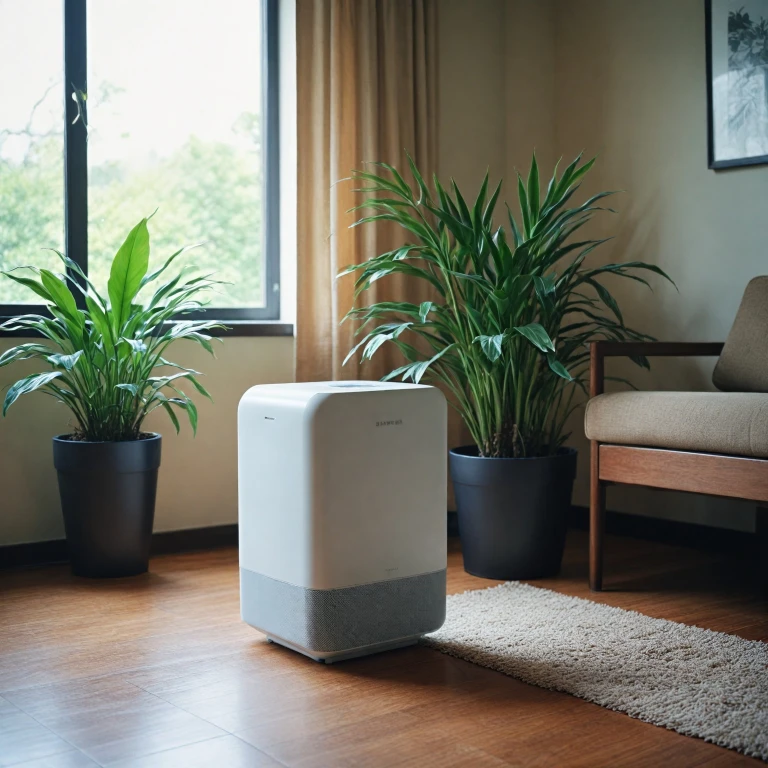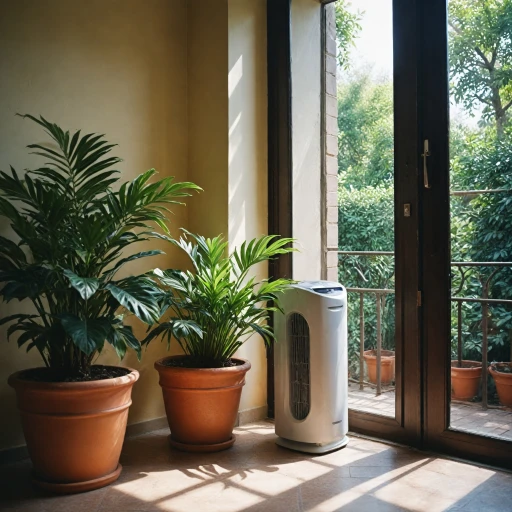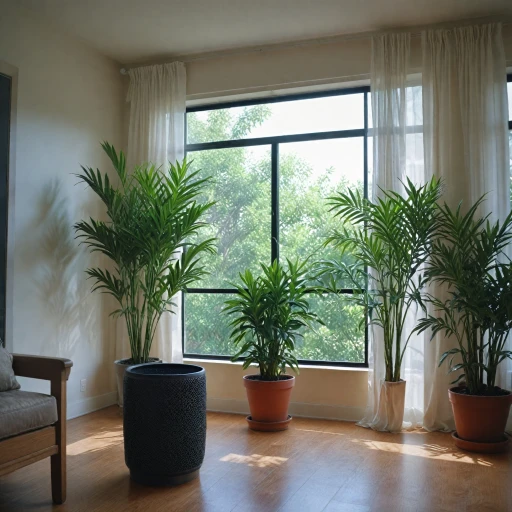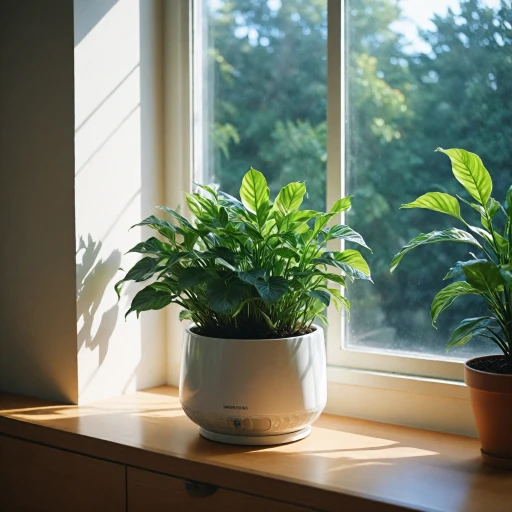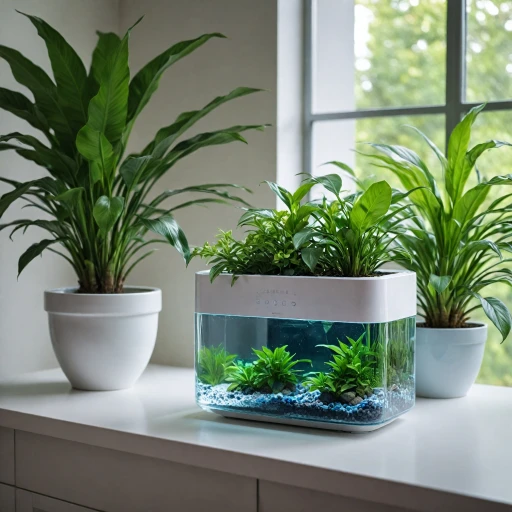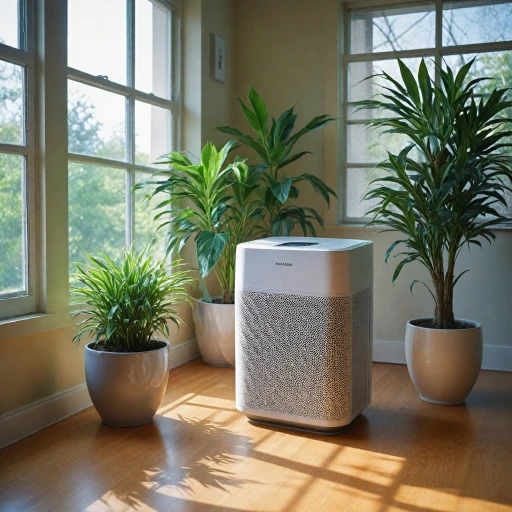
Understanding How Air Purifiers Work
Decoding the Mechanism of Air Purifiers in Odor Management
Air purifiers have grown in popularity as a solution for improving air quality in indoor environments, especially when it comes to tackling unwanted odors. The essential function of these devices revolves around their ability to filter particles and compounds present in the air. Understanding the mechanisms at play in an air purifier can provide insights into how effectively they manage smells in your home.
At the core of most air purifiers are HEPA filters and carbon filters, each playing a unique role in the purification process. HEPA filters are particularly proficient at capturing small airborne particles, including dust, pollen, and pet dander. However, odors are often composed of far smaller molecules known as volatile organic compounds (VOCs), which are best addressed by a carbon filter.
Activated carbon is a powerful component used in many air purifiers. Its porous nature allows it to adsorb a variety of organic compounds, effectively removing a range of odors, from pet odors to smoke smells. The efficiency of activated carbon filters in trapping these VOCs makes them a popular choice for those specifically targeting odor control. For more in-depth information on how filters help with smells, you might want to explore further.
While choosing the best air purifier for odors, it’s important to consider the types of particles and compounds you’re tackling, as this will guide you towards the most effective filter type. As air technology continues to advance, the quest for the best air purifier purifying experience only grows more feasible, promising improved air quality for all.
Types of Air Purifiers and Their Effectiveness on Odors
Exploring Different Air Purifier Types and Their Odor Tackling Abilities
When it comes to addressing unpleasant odors in your home, selecting the right type of air purifier can make a significant difference. Various technologies are employed by air purifiers, each serving different purposes and effectively targeting unique air quality issues. Let's delve into some of the best air purifier types for removing odors and enhance air quality.- HEPA Air Purifiers: High-Efficiency Particulate Air (HEPA) filters are renowned for trapping particles like pet dander and smoke. While HEPA filters are excellent for improving overall air quality by capturing fine particles and allergens, they might not be specifically designed to tackle smells directly. Nonetheless, they are often paired with other filtration technologies to enhance their odor-removing capabilities.
- Activated Carbon Filters: These filters excel at dealing with odors and volatile organic compounds (VOCs). The activated carbon in these filters absorbs odors, smoke, and certain gases due to its porous nature, which allows it to trap airborne compounds. For more in-depth information on this technology, you can explore the role of activated carbon in air purification.
- Hybrid Air Purifiers: Some air purifiers combine both HEPA and activated carbon filters, offering a well-rounded solution for improving air quality by removing particles and odors. Hybrid models tend to be among the best air purifiers for those specifically seeking to tackle pet odors or odors caused by .
- Ionizers and Ozone Generators: While ionizers or ozone generators may claim to neutralize odors, their safety and effectiveness often come into question. Ozone, a product of these devices, is not suitable for indoor air and can lead to respiratory problems, so they are generally not recommended as the best choice for odor removal.
Common Sources of Indoor Odors
Identifying Sources of Indoor Odors
Indoor odors are a common concern for many households, and understanding where these smells originate is the first step in addressing them. There are several typical sources of indoor odors that you may encounter:- Pet Odors: Pets, especially dogs and cats, can contribute to unpleasant smells in your home. Pet dander, fur, and accidents on carpets or furniture often result in persistent odors.
- Cooking Smells: Certain foods, particularly those that are fried or involve strong spices, can linger in the air long after you've finished cooking. Grease particles can also settle on surfaces, adding to the odor problem.
- Tobacco Smoke: Tobacco smoke is a well-known source of indoor air pollution, releasing a mixture of fine particles and volatile organic compounds (VOCs) that contribute to long-lasting odors.
- Mold and Mildew: Mold spores can grow rapidly in moisture-rich environments, and aside from their potential health risks, they can emit a musty smell that's challenging to remove.
- Household Cleaners: While these products are meant to eliminate dirt and bacteria, many contain strong chemicals that release odors into the air, sometimes reacting with other substances to form new smells.
Factors Influencing Odor Removal Efficiency
Key Influences on Odor Elimination Efficiency
Understanding what affects the effectiveness of air purifiers in removing odors requires delving into several factors. While air purifiers can be a significant asset in improving indoor air quality, the efficiency of odor removal can depend on multiple variables:- Filter Type: The type of filter used in an air purifier is paramount when it comes to tackling smells. HEPA filters are excellent at capturing particles such as pet dander and smoke but are less effective in removing odors on their own. Carbon filters, especially activated carbon filters, are best for adsorbing smells and volatile organic compounds (VOCs). Thus, purifiers with a combination of HEPA and carbon filters can often provide the most effective solution against unpleasant odors.
- Pollutant Concentration: The concentration of odors or VOCs in indoor air can significantly affect how well an air purifier performs. High levels of pollutants may necessitate more robust air purifiers or those tailored specifically for odor removal.
- Air Exchange Rate: The air exchange rate, also known as air changes per hour (ACH), is an important measure. It indicates how many times the air within a room is filtered in one hour. Higher ACH often means more efficient odor removal, especially in rooms with persistent smells like smoke or pet odors.
- Room Size: The size and layout of the space where the air purifier operates also play a crucial role. An air purifier suitable for a smaller room may not be effective in larger spaces unless it’s equipped with higher capacity filters and a strong airflow system.
- Humidity Levels: Moist environments can exacerbate odors, and certain types of air purifiers perform differently based on humidity levels. Slightly reducing humidity can sometimes enhance the efficacy of carbon filters.
Additional Benefits of Using Air Purifiers
The Multifaceted Advantages of Air Purifiers Beyond Odor Control
Air purifiers are well-known for their ability to manage unwanted smells, but their benefits extend far beyond just odor removal. By improving air quality, purifiers enhance overall health and comfort within indoor environments. Let's explore some of these additional advantages:- Improved Indoor Air Quality: Air purifiers equipped with HEPA filters effectively capture airborne particles such as dust, pollen, and pet dander. This is especially beneficial for individuals with allergies or respiratory conditions, as cleaner air reduces potential triggers.
- Reduction of Smoke and VOCs: Many purifiers are designed to tackle smoke particles and volatile organic compounds (VOCs), which include pollutants from household products and tobacco smoke. Activated carbon filters, in particular, are efficient at absorbing and neutralizing these compounds, helping to create a healthier indoor atmosphere.
- Mitigating Pet Odors and Dander: For households with pets, purifiers help remove pet odors and dander, ensuring a fresher and more pleasant home. This is crucial for pet owners who are also allergy sufferers.
- Allergy and Asthma Relief: By removing allergens and irritants from the air, purifiers aid in alleviating symptoms associated with allergies and asthma, fostering a more comfortable living space.
Tips for Choosing the Right Air Purifier for Odor Control
Selecting the Optimal Air Purifier for Odor Management
Choosing the right air purifier can be a game-changer when it comes to tackling unpleasant odors in your indoor environment. It's essential to consider several factors to ensure you select the best air purifier for your needs.- Filter Type: Ensure that the air purifier is equipped with carbon filters, known for their effectiveness in absorbing odors, volatile organic compounds (VOCs), and smoke. A purifier combining HEPA and carbon filters can remove both odors and small particles like pet dander better.
- Size and Coverage: Match the size of the air purifier to the size of the room you intend to use it in. A purifier that's too small won't effectively remove odors from larger areas, whereas a purifier that's too large might not be cost-efficient.
- Odor-Specific Features: Some air purifiers include dedicated settings or technologies aimed directly at removing odors, such as those caused by pets or cooking.
- Air Quality Sensors: An air purifier with a built-in air quality sensor can adjust its operation based on the level of odors and particles in the air, offering a more tailored purification process.
- Noise Level: Consider the noise levels, especially if you plan to use the air purifier in a bedroom or office. Some purifiers have "sleep" modes which reduce noise during nighttime use.
